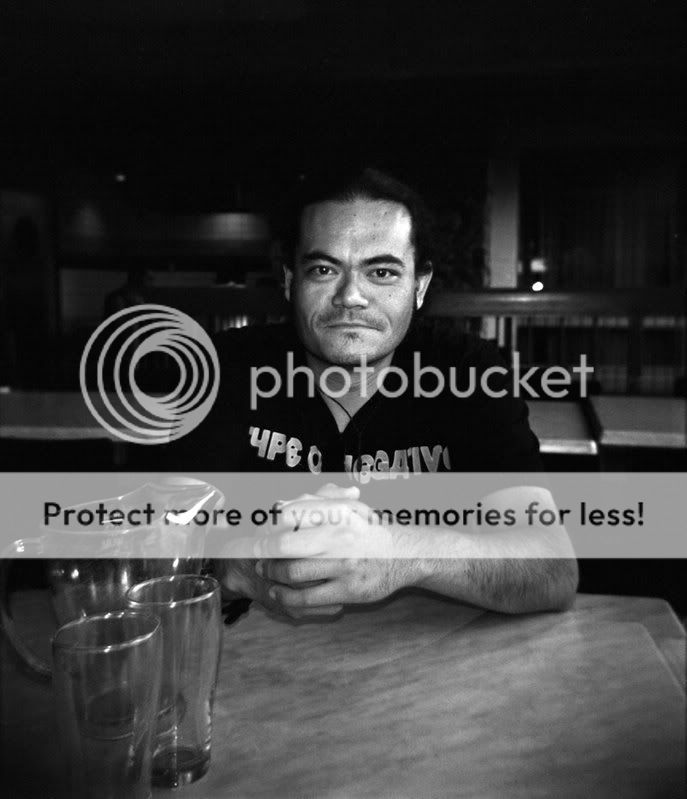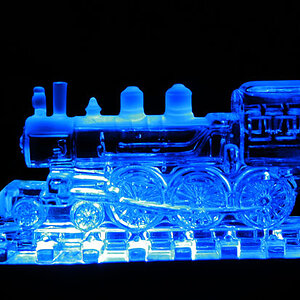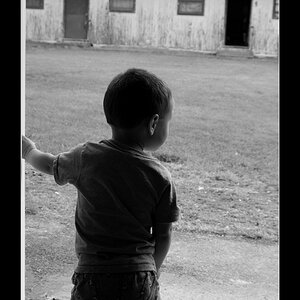Garbz
No longer a newbie, moving up!
- Joined
- Oct 26, 2003
- Messages
- 9,713
- Reaction score
- 203
- Location
- Brisbane, Australia
- Website
- www.auer.garbz.com
- Can others edit my Photos
- Photos NOT OK to edit
Well if you missed http://www.thephotoforum.com/forum/showthread.php?t=119939 I just started developing. I am using a Kodak D-76 developer and an Ilford Rapid Fixer, no stop bath, no drying aid.
To say the first time was a disaster is an understatement. I dropped the film while winding the reel, and just as I wound the reel the sensor light outside came on and I could visibly see a small amount of light leaking into where I was working. Anyway I quickly dumped the reel into the tank and put on the lid.
I couldn't get the temperatures down to 20degrees. (I live in Australia) I even tried filling the sink water with ice, but in the end I settled for adjusting all the times to 22 degrees.
After the first inversion I realised the o-ring in the development tank was still laying on the floor of my cupboard since I knocked it out in my haste to get the film in. Developer went everywhere. I think I over developed slightly my images seem to be very contrasty, but then again I shot on a Holga so it really is hard to tell.
I also need to refine my drying. I got two wet spots on my negative that I have found so far and I noticed what I dried with left some lint on the film which came up bright white on the scan. I will go back into the original thread and start taking some of the varied advice from there for my next roll.
Well my favourite photo:

I am looking forward to doing another roll next week but this time from my Nikon FE so I will be more clued in to if my photos are correctly exposed or not.
To say the first time was a disaster is an understatement. I dropped the film while winding the reel, and just as I wound the reel the sensor light outside came on and I could visibly see a small amount of light leaking into where I was working. Anyway I quickly dumped the reel into the tank and put on the lid.
I couldn't get the temperatures down to 20degrees. (I live in Australia) I even tried filling the sink water with ice, but in the end I settled for adjusting all the times to 22 degrees.
After the first inversion I realised the o-ring in the development tank was still laying on the floor of my cupboard since I knocked it out in my haste to get the film in. Developer went everywhere. I think I over developed slightly my images seem to be very contrasty, but then again I shot on a Holga so it really is hard to tell.
I also need to refine my drying. I got two wet spots on my negative that I have found so far and I noticed what I dried with left some lint on the film which came up bright white on the scan. I will go back into the original thread and start taking some of the varied advice from there for my next roll.
Well my favourite photo:

I am looking forward to doing another roll next week but this time from my Nikon FE so I will be more clued in to if my photos are correctly exposed or not.





![[No title]](/data/xfmg/thumbnail/32/32157-d34c504b7ccf1335e959a8a2be6cfacc.jpg?1619735234)




![[No title]](/data/xfmg/thumbnail/36/36681-6b091a8cd7318d47018c823a2eff3185.jpg?1619737677)
![[No title]](/data/xfmg/thumbnail/36/36682-50d0684eabff70509e27d7061c265146.jpg?1619737677)




